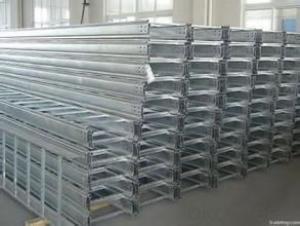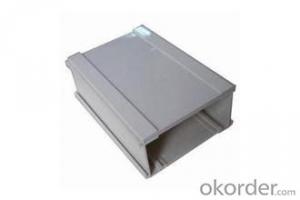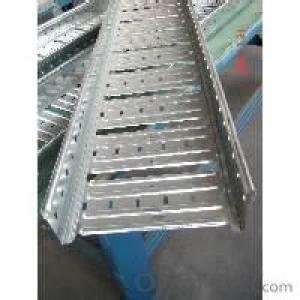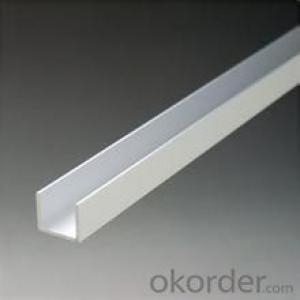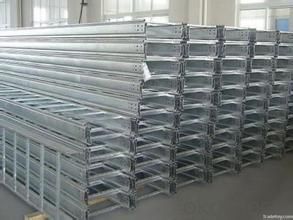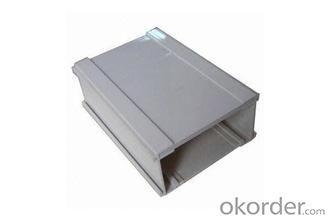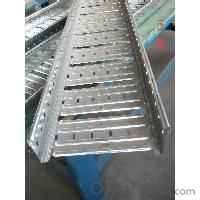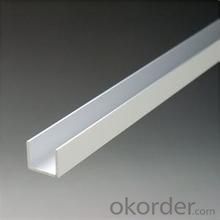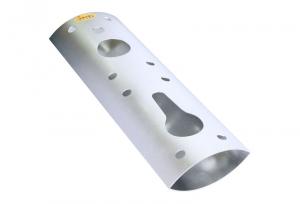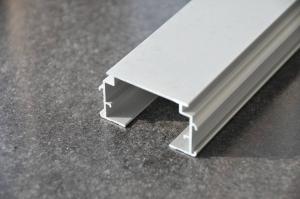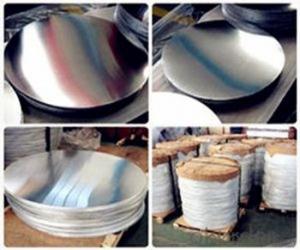Aluminum Hollow Profiles Section H for Cable Tray Alu Extrusion
- Loading Port:
- China Main Port
- Payment Terms:
- TT OR LC
- Min Order Qty:
- -
- Supply Capability:
- -
OKorder Service Pledge
OKorder Financial Service
You Might Also Like
Aluminium is a relatively soft,durable, lightweight, ductile and malleablemetal with appearance ranging from silvery to dull gray,depending on the surface roughness. It is nonmagnetic and does not easilyignite. A fresh film of aluminium serves as a good reflector (approximately92%) of visible light and an excellent reflector (as much as98%) of medium and far infrared radiation. The yield strength of pure aluminium is 7–11 MPa,while aluminium alloys have yield strengths ranging from200 MPa to 600 MPa. Aluminium has about one-third the density and stiffnessof steel. It iseasily machined,cast, drawn and extruded.
Alu Profile:
Material | Alloy 6063,6061,6005or according to customer’s choice |
Temper | T3, T4, T5, T6 |
Surface | Anodize, electrophoresis, powder coating, PVDF coating, wood grain painting, matted, etc. |
Length | Coating 6.5 meters, Anodizing 6.5 meters, Mill finish 5 meters |
Application | Industrial, electrical equipment(TV set, air conditioner, refrigerator, computer), decoration,construction, transportation |
Custom Made | We can package following with customer's request. |
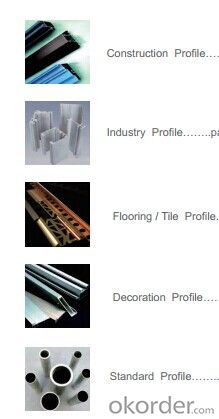
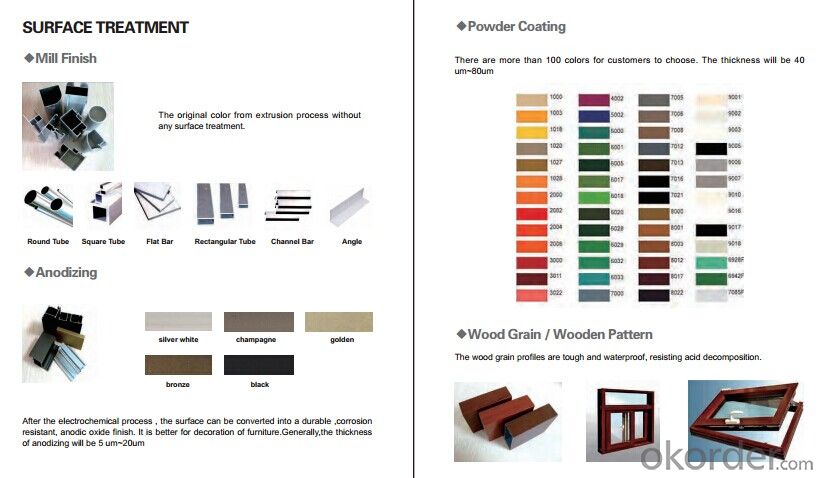
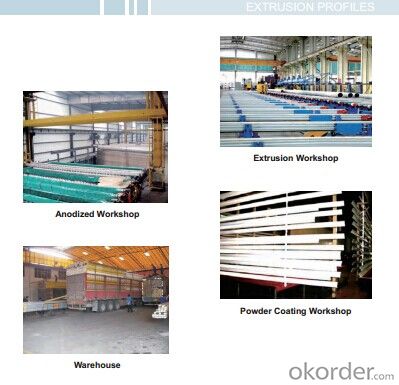
FAQ:
1. What is the form of payment?
Normally 30% TT, L/C at sight
2. Type of quotation?
FOB, CFR, CIF
3. Port of loading?
Guangzhou/Shenzhen port
4. Delivery time?
15-20 days after client’s deposit
- Q: This question asks for guidance on selecting a dependable supplier for aluminum profiles, which are essential for various industries.
- <p>To choose a reliable supplier of aluminum profiles, consider the following: Check their industry experience and reputation. Look for certifications and quality management systems like ISO standards. Evaluate their product quality by requesting samples and conducting tests. Assess their delivery times and reliability. Ensure they have a wide range of profiles to meet diverse needs. Investigate customer reviews and testimonials for insights into their service. Finally, consider the cost-effectiveness of their products without compromising on quality.</p>
- Q: What are the various materials that can be combined with aluminum profiles in construction or manufacturing?
- <p>Aluminum profiles can be combined with a variety of materials to enhance their functionality and durability. Common materials include steel for added strength, plastics for lightweight components, and various types of glass for transparency and aesthetics. They can also be paired with rubber or silicone seals for weatherproofing, and wood for a warmer, more natural aesthetic. Additionally, aluminum profiles are often used with other metals such as copper or brass for electrical conductivity or corrosion resistance. The choice of material depends on the specific application, desired properties, and design requirements.</p>
- Q: Can aluminum profiles be used for shopfitting and retail displays?
- Certainly, shopfitting and retail displays can absolutely utilize aluminum profiles. Aluminum, being a versatile material, possesses the advantageous combination of lightweight properties with remarkable strength, making it an ideal choice for constructing structures and fixtures in retail spaces. The customization and fabrication of aluminum profiles are effortlessly achievable, enabling the creation of tailored designs to meet specific requirements, thus allowing for the utmost flexibility in developing diverse display and shopfitting solutions. Moreover, the sleek and contemporary aesthetic offered by aluminum profiles is frequently sought after in retail environments. Furthermore, their exceptional durability and resistance to corrosion guarantee their enduring presence in areas with high foot traffic. Overall, due to their versatility, strength, customization options, and aesthetic appeal, aluminum profiles are an exceptional selection for shopfitting and retail displays.
- Q: What are the surface finishes available for aluminum profiles?
- There are several surface finishes available for aluminum profiles, each offering different aesthetics and properties. Some of the common surface finishes for aluminum profiles include: 1. Mill Finish: This is the standard finish obtained directly from the mill without any additional treatment. It has a raw appearance with visible manufacturing marks and is typically used for structural applications where aesthetics are not a concern. 2. Anodized Finish: This finish involves an electrochemical process that creates a protective oxide layer on the surface of the aluminum, resulting in increased corrosion resistance and durability. Anodized finishes are available in various colors and can provide a glossy or matte appearance, making them popular for decorative applications. 3. Powder Coating: Powder coating involves applying a dry powder onto the aluminum surface and then curing it in an oven. This finish provides excellent durability, corrosion resistance, and a wide range of color options. It can also offer various textures, such as smooth, matte, or textured, allowing for customization according to specific design requirements. 4. Brushed Finish: This finish is achieved by brushing the aluminum surface with abrasive materials to create a pattern of fine lines, giving it a brushed appearance. This finish is commonly used to add a decorative touch to aluminum profiles and can offer a sleek and modern look. 5. Polished Finish: Polishing involves using abrasive materials to create a smooth and shiny surface on the aluminum. This finish can range from a high gloss mirror-like appearance to a satin finish. Polished finishes are often used in architectural applications where a reflective and visually appealing surface is desired. 6. Wood Grain Finish: This finish involves applying a special coating to the aluminum surface, mimicking the appearance of wood grain. It provides a natural and warm look, making it suitable for applications where a wood-like aesthetic is desired without the maintenance requirements of actual wood. These are just a few examples of the surface finishes available for aluminum profiles. The choice of finish depends on the intended application, desired appearance, and specific requirements such as corrosion resistance, durability, and ease of maintenance.
- Q: This question asks about the various thicknesses and grades of aluminum profiles that are specifically used for roofing purposes.
- <p>Aluminum profiles for roofing come in different thicknesses and grades, which determine their strength and suitability for various applications. Common thicknesses range from 0.5mm to 1.5mm, with 0.5mm and 0.6mm being the most common for residential roofing. For commercial and industrial applications, thicknesses of 0.8mm to 1.5mm are often used due to their increased load-bearing capacity. Grades of aluminum profiles are typically classified based on their alloy composition, with 1100, 3003, 5005, and 6061 being the most common. Each grade has different properties, such as corrosion resistance, formability, and strength, which make them suitable for specific roofing applications. For instance, 3003-grade aluminum is widely used for roofing due to its good formability and moderate strength. The choice of thickness and grade depends on the specific requirements of the roofing project, such as the expected load, environmental conditions, and aesthetic preferences.</p>
- Q: This question asks for a method to determine the quantity of aluminum profiles needed for a construction project.
- <p>To calculate the amount of aluminum profiles required for a building project, follow these steps: 1. Determine the project's design and specifications to identify where aluminum profiles are needed. 2. Measure the dimensions of the areas requiring aluminum profiles (length, width, height). 3. Calculate the total linear footage needed by multiplying the dimensions. 4. Consider the profile's cross-sectional area and the project's load-bearing requirements. 5. Account for waste and additional material for joints, connections, and potential errors. 6. Consult with suppliers or use industry-standard formulas to determine the exact quantity of profiles needed. 7. Review and adjust calculations as the project progresses to ensure accuracy.</p>
- Q: What are the different surface finishing options available for aluminum profiles?
- There are several surface finishing options available for aluminum profiles, each offering different benefits and aesthetic appearances. Some of the commonly used surface finishing options for aluminum profiles include: 1. Anodizing: Anodizing is an electrochemical process that creates a protective oxide layer on the surface of the aluminum. This process not only enhances corrosion resistance but also provides a variety of color options. Anodized aluminum profiles are durable, easy to maintain, and have a smooth, attractive finish. 2. Powder Coating: Powder coating involves applying a dry powder to the surface of the aluminum profile and then curing it under heat. This process creates a tough, decorative finish that is resistant to chipping, scratching, and fading. Powder coating offers a wide range of color options and can be customized to achieve different textures and effects. 3. Polishing: Polishing is a mechanical process that creates a high-gloss, reflective finish on the aluminum profile. It involves using abrasives and polishing compounds to remove surface imperfections and achieve a smooth, mirror-like appearance. Polished aluminum profiles are commonly used in decorative applications where a sleek and shiny finish is desired. 4. Brushing: Brushing involves using abrasive brushes or pads to create a textured, brushed finish on the aluminum profile. This process produces parallel lines or circular patterns on the surface, giving it a unique and stylish appearance. Brushed aluminum profiles are often used in architectural and interior design applications. 5. Electrophoretic Coating: Electrophoretic coating, also known as e-coating, is an immersion process where an electrically charged paint is applied to the aluminum profile. This process ensures uniform coating thickness and excellent corrosion resistance. E-coating provides a smooth, even finish and is commonly used in automotive and industrial applications. 6. Wood Grain Effect: Aluminum profiles can be treated with a special coating to mimic the appearance of wood grain. This option is popular in architectural applications where the durability and low maintenance of aluminum are preferred over natural wood. These are just a few of the surface finishing options available for aluminum profiles. The choice of finishing method depends on the desired appearance, functionality, and intended application of the aluminum profile.
- Q: Is it possible to incorporate recycled aluminum extrusions into a construction project?
- <p>Yes, you can use recycled aluminum extrusions in your building project. Recycled aluminum is not only environmentally friendly but also offers the same strength and durability as new aluminum. It is commonly used in construction for framing, window and door profiles, and structural components. Ensure that the recycled aluminum meets the required industry standards for your project to guarantee quality and performance.</p>
- Q: Can aluminum profiles be used for soundproofing?
- Aluminum profiles have the ability to offer some soundproofing benefits, although they may not provide the same level of sound reduction as specialized soundproofing materials like acoustic panels or insulation. These profiles are commonly used in the construction industry for various purposes, such as window frames and door frames. When incorporated into soundproofing applications, aluminum profiles can effectively minimize noise transmission through windows and doors. The lightweight and durable nature of aluminum makes it an ideal material for blocking or dampening sound waves. Its structural integrity allows for the creation of tight seals, resulting in reduced sound leakage and improved sound insulation. To further enhance soundproofing, aluminum profiles can be combined with other materials like rubber gaskets or weatherstripping. This combination enhances the sealing properties and contributes to better sound insulation. Additionally, the use of double or triple glazing with laminated glass in conjunction with aluminum profiles can provide even better sound insulation. However, it is important to consider that the effectiveness of aluminum profiles in soundproofing depends on various factors. These factors include the thickness and quality of the profiles, the design of the window or door system, and the overall construction of the building. In conclusion, while aluminum profiles can assist in reducing noise transmission through windows and doors, they should be viewed as part of a comprehensive soundproofing strategy rather than the sole solution.
- Q: Are aluminum profiles energy-efficient?
- Certainly, aluminum profiles are regarded as energy-efficient. Being a highly conductive material, aluminum has the ability to efficiently transfer heat or cold. This characteristic enables aluminum profiles to offer outstanding thermal insulation, effectively reducing energy loss and ensuring a steady indoor temperature. Furthermore, aluminum profiles can be constructed with thermal breaks, which enhance their energy efficiency by diminishing heat transfer between the interior and exterior of a building. These attributes make aluminum profiles a favored option for windows, doors, and other building elements, as they actively contribute to energy conservation and mitigate a structure's overall carbon footprint.
Send your message to us
Aluminum Hollow Profiles Section H for Cable Tray Alu Extrusion
- Loading Port:
- China Main Port
- Payment Terms:
- TT OR LC
- Min Order Qty:
- -
- Supply Capability:
- -
OKorder Service Pledge
OKorder Financial Service
Similar products
Hot products
Hot Searches
Related keywords
